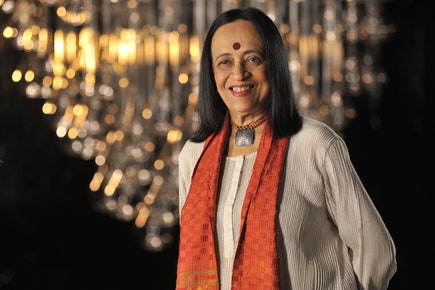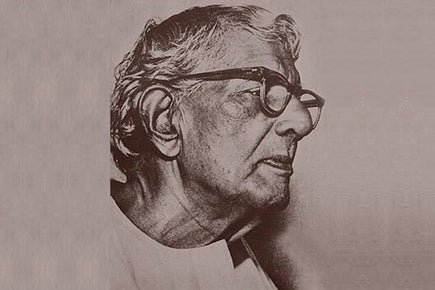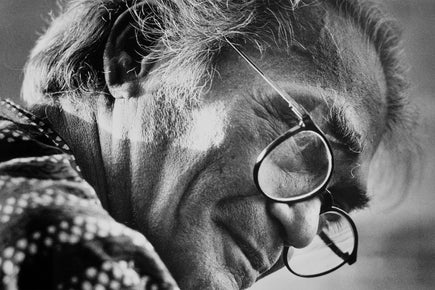Kodak Brownie - The Historical Camera That Captured Raw, Candid Accounts of the 20th Century Experience
The “Brownie” camera was invented in 1900, over a hundred years before the surge of the 21st century’s internet economy that runs on mass creation and consumption of photographs. In stark contrast to the modern-day scenario, photography in the olden days was a patient activity involving heavy equipment and manual post-processing rather than a convenient feature on smartphones and digital cameras.
 Kodak Brownie No 2 camera; click to purchase on Artisera
Kodak Brownie No 2 camera; click to purchase on Artisera
In the 1800s, cameras predominantly used hefty glass-plate negatives for each exposure. In 1888, US inventor George Eastman made a ground-breaking invention - the first “Kodak Camera” with an easy-to-load film, enough to take 100 photographs. When the last picture was taken, the entire camera was sent back to Kodak to be developed. But this $25 camera only brought photography within the reach of wealthy hobbyists.
Eastman Kodak introduced the Brownie in 1900 - a tiny cardboard box camera with a meniscus lens, whose film could be taken out of the camera after shooting and developed at home. The Brownie was an affordable and handy camera series designed to popularise photography. It allowed laymen to take quick and easy photographs – popularly known as “snapshots” in the 20th century. Released at an initial price of $1, these Brownie cameras democratised the act of photography with over 1,50,000 cameras shipped in the first year of production itself!
 Mass-produced Brownie cameras being packed and shipped (Source: bbc.com)
Mass-produced Brownie cameras being packed and shipped (Source: bbc.com)
The catchy name “Brownie” was carefully picked for the cameras, as the major advertising campaign was primarily targeted at kids. The magical “Brownie” characters from Canadian artist and writer Palmer Cox’s popular series of children’s books (called “The Brownies”), were the mascots for the cameras.
 A young girl taking a photograph with a Kodak Brownie circa 1935 (Source: Getty Images)
A young girl taking a photograph with a Kodak Brownie circa 1935 (Source: Getty Images)
As Kodak was essentially a photographic film-making company, the stroke of genius behind the Brownie series was that the handy cameras created a huge demand for films by allowing people to take pictures casually, or even indulgently. Manufactured for around 80 years, the Brownie series, released in 125 different models, turned photography into an everyday activity and captured raw, candid accounts of the 20th century experience.
In early April of 1912, a young Canadian woman, Bernice Palmer was travelling on the SS Carpathia cruise liner from New York City to the Mediterranean. To seventeen-year-old Bernice’s surprise, the ship which had barely cleared New York was diverted to pick up survivors from the Titanic on the morning of April 14. With her new Brownie camera, gifted around her birthday in January, Bernice captured some of the 700 Titanic survivors that were rushed onto the Carpathia as well as pictures of the iceberg that tragically sunk the mighty Titanic. In 1986, Bernice donated her Brownie and its pictures to the Smithsonian collection at the National Museum of American History.
 Pictures taken on Bernice’s Brownie - Titanic honeymooners Mr. & Mrs. George A. Harder (top); The Iceberg that Sank Titanic (bottom) (Source: americanhistory.si.edu)
Pictures taken on Bernice’s Brownie - Titanic honeymooners Mr. & Mrs. George A. Harder (top); The Iceberg that Sank Titanic (bottom) (Source: americanhistory.si.edu)
The handy and sturdy Brownie cameras, which had naturally become a utilitarian part of life, also went along to battlegrounds. In 2014, Brownie camera pictures taken by a British soldier, Hubert Berry Ottaway, found in a rusty tin box almost 95 years after they were taken, were restored and developed by his grandson. Hubert took pictures of the life of soldiers and towns destroyed during World War I, throwing light on the grave aftermath of war. Although Hubert survived the war, he lost most of his sight owing to war injuries. Ironically, he became completely blind by 1920 and never had an opportunity to see the photographs he had captured.
 Pictures taken by Hubert in the 1910s with his Brownie (Source: bbc.com)
Pictures taken by Hubert in the 1910s with his Brownie (Source: bbc.com)
In the 1940s and 50s, one of the UK's prominent photographers Bert Hardy took several iconic shots for the Picture Post magazine with his Brownie, making a case for the argument that great photographs aren’t always a consequence of great equipment.
 Two dancers from the famous troupe, Tiller Girls, captured in a candid moment by Bert Hardy’s Brownie in Blackpool, 1951 (Source: Getty Images)
Two dancers from the famous troupe, Tiller Girls, captured in a candid moment by Bert Hardy’s Brownie in Blackpool, 1951 (Source: Getty Images)
The Brownie series captured first-hand, raw, and authentic narratives of some of the critical events in history more than any other cameras of the time. By introducing quick and easy snapshots to the masses, Brownies democratised photography and effectively challenged its privileged setup. The Brownie series, way ahead of its time in thought and technique, set photographs on a course of becoming the cultural portals that represent our individual and social identities.
























































































